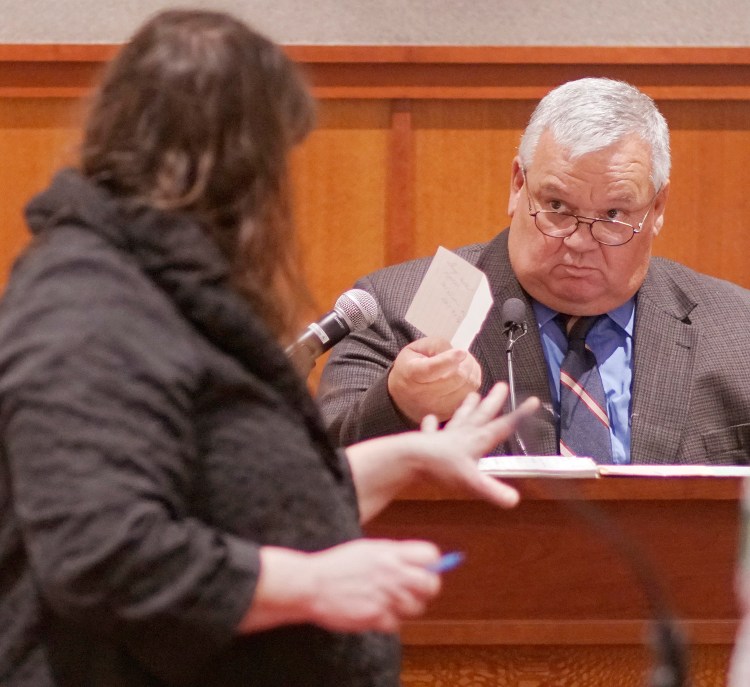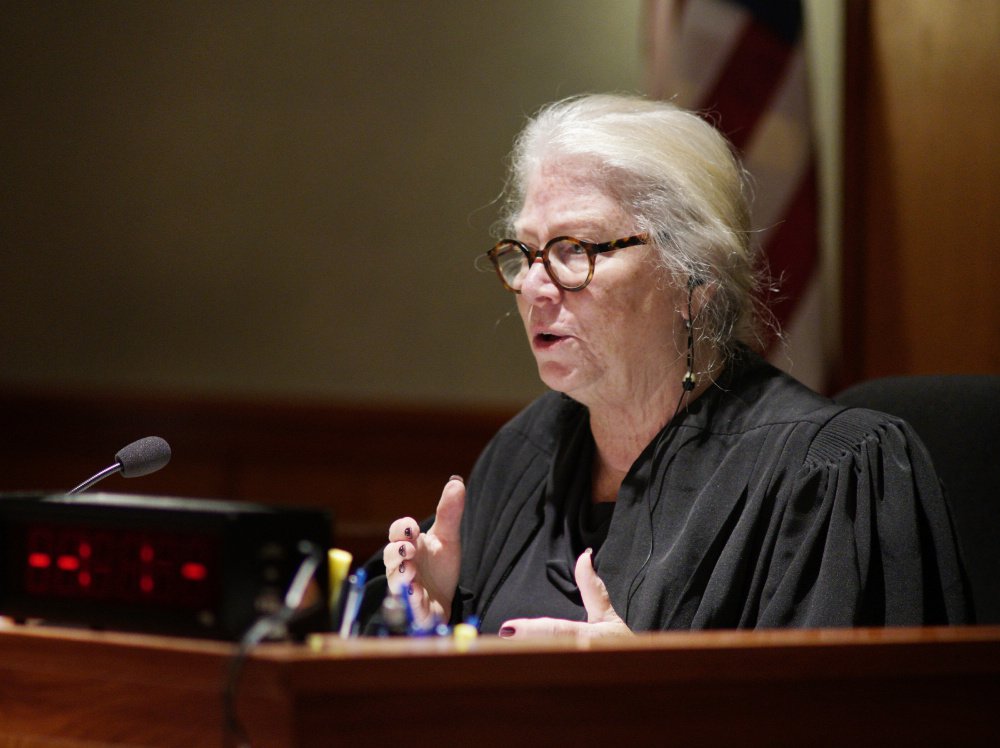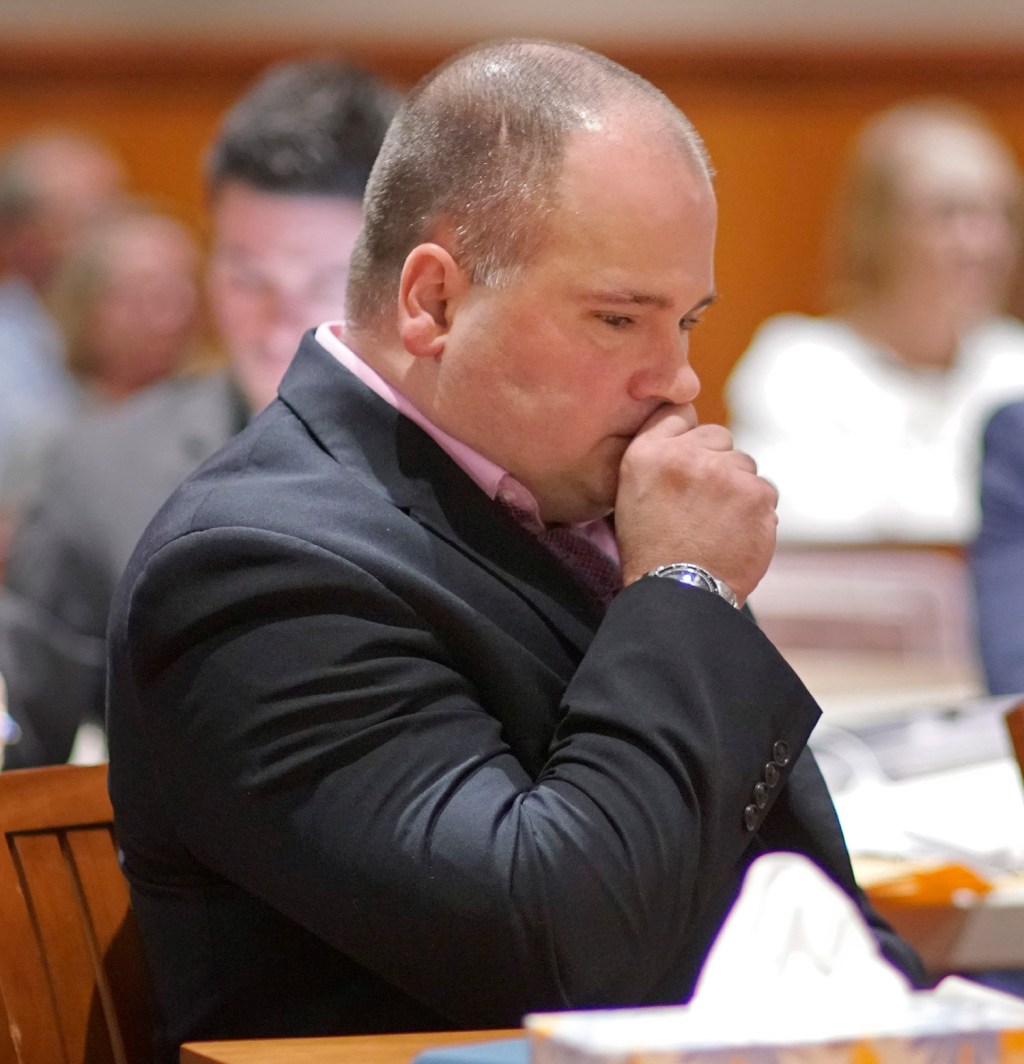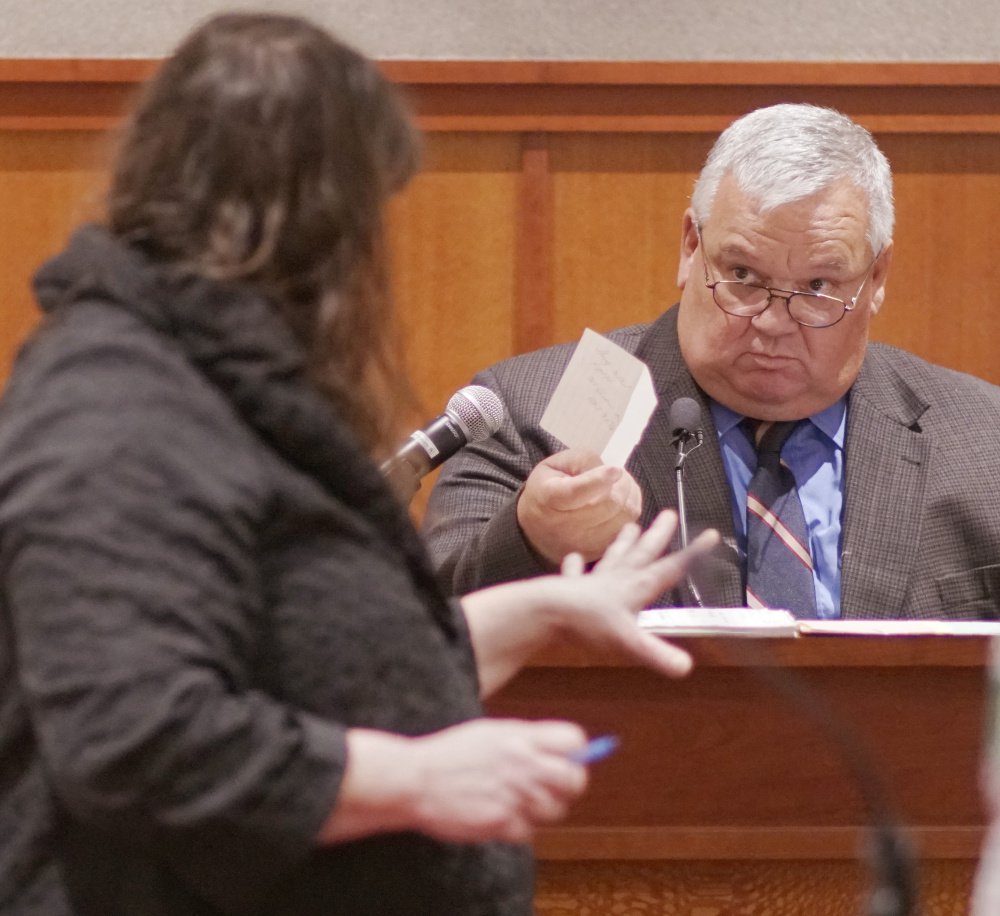When Anthony Sanborn was first charged with killing Jessica Briggs on a Portland pier in 1989, prosecutors pressured another teenager to testify against him or face prosecution, the teenager’s former attorney testified Thursday.
The other teenager had been present at the time of the murder, according to a key witness at the time.
She was Michelle Lincoln, who knew Sanborn growing up and is now his wife.
Lincoln invoked her right to remain silent and did not testify at Sanborn’s trial. But her role in the investigation came up Thursday at the review of Sanborn’s murder conviction, introduced as evidence that prosecutors were determined to get a conviction of Sanborn.
Sanborn’s lawyers also introduced testimony Thursday from an ex-convict who was in jail with Sanborn in the late 1980s and said detectives told him they would cut his sentence in half if he told them Sanborn had admitted to the murder. The ex-convict didn’t believe they would help him and refused to cooperate, he said.
Michelle Lincoln’s role in the investigation has come up in earlier testimony, but became more clear Thursday.
Her attorney, Stephen Schwartz, said that before Sanborn’s original trial, he was told by then-Assistant Attorney General Pamela Ames that if Lincoln did not accept a blanket immunity deal in exchange for testimony against Sanborn, Ames would prosecute Lincoln for hindering apprehension, a felony.
According to Schwartz, Lincoln told him she would testify truthfully, but would not tell Ames what that testimony would be before she took the stand.
They were negotiating because Lincoln had wavered on what she told detectives during the murder investigation.
At first, she told them she washed Sanborn’s bloody jeans after the murder. But she later contacted police and said that version was incorrect, that she felt pressured and that she did not want to testify.
“I had conflicting statements from Michelle Lincoln,” Ames said Tuesday in her testimony. “I also thought she knew more about the murder than what she was telling (police) at that time.”
The telephone conversations between Schwartz and Ames before the original trial were described in a memo that Schwartz drew up to keep in his file because he was so concerned by Ames’ statements – an unusual move in his 32 years of practicing law, he said.
“Was former AAG Ames interested in Michelle’s truthful testimony, no matter what that testimony was?” asked Timothy Zerillo, an attorney for Sanborn.
“No,” Schwartz said. “I was deeply concerned about the nature of what Ms. Ames was saying to me, and the risk to my client of what Ms. Ames was expecting her to testify to.”
Ames testified previously that she told Schwartz that she thought Lincoln was involved in the murder.
Ames followed through on her threat, and Lincoln was later prosecuted for hindering apprehension, a felony, because she helped Sanborn leave Portland after the murder, when they traveled to Virginia Beach together about a week later. Police brought him back because they needed his testimony in another unrelated case.
By the time she was prosecuted, Lincoln had a child, then an infant, and accepted a plea deal calling for 30 days in jail. Schwartz said he advised her to take the plea, not because she was guilty, but because she might have otherwise been charged with a felony as an adult.
Asked Tuesday why she never pushed for more serious charges against Lincoln given that she had been implicated her in the murder, Ames said she was concerned about the effect another trial would have on Hope Cady, the star witness.
“At one point in time I had even seriously considered bringing an accomplice murder case against Michelle Lincoln,” Ames said. “But Hope Cady wanted to be done with it. She didn’t want to testify about it again.”
Cady recanted her testimony in April. She said she was pressured by detectives to implicate Sanborn, and that she was not even on the Maine State Pier the night of the killing.
In other testimony Thursday, Jerry Larrivee said he was in jail with Sanborn when detectives implied that if he told them Sanborn admitted to killing Briggs, they could reduce Larrivee’s sentence.
“Detective (Daniel) Young would say to me, such as with Mr. Sanborn’s case, he’d say, ‘Well geeze, if you and Tony were to ever have a conversation and he were to ever tell you that he stabbed (Briggs) and cut her throat and threw her in the river, I could have your sentence cut in half.’ “
But Larrivee, who was in jail awaiting trial on burglary, theft and robbery charges and said he had provided false testimony in two prior cases at the request of police, had discovered that detectives James Daniels and Young did not have the power to alter a jail sentence.
“I figured out Detective Daniels and Detective Young were lying through their teeth to me,” Larrivee said. When the detectives came back, Larrivee said, he had two words for them: “Pound sand,” he said from the witness stand.
“Detective Daniels said, ‘You don’t want to talk like that because I’ll bury you,’ ” Larrivee said.
The next time he saw both officers, it was at his trial. Larrivee said he was ultimately sentenced to 17 years in prison.
The final witness of the day was retired Portland police Detective Karl Rybeck, who was assigned Sanborn’s case in 2008 when Sanborn filed a motion to test DNA evidence in his case.
Rybeck said he and his supervisor searched extensively for the original police reports and other case material, but they could only find a small box, about the size of a sheet of paper and six inches tall, with copies of some of the files. There were no originals.
Rybeck said he and others searched the police station at various times between roughly 2008 and 2016, when Rybeck retired, and even called Daniels, who had retired in 1998.
“It wasn’t an everyday thing,” he said. “But we looked.”
Earlier this year, after the Attorney General’s Office requested he look for any case material he had kept, Daniels turned over two boxes of material totaling hundreds of pages, including his original field notes.
“My first reaction was, ‘Oh good, I found some notes, I’m going to turn those in,’ ” Daniels said Oct. 23. “On the bottom I saw, ‘Oh my gosh, there’s the originals.’ My first reaction was, ‘I found the notes,’ but when I saw those original reports, it’s embarrassing. I don’t even know how it happened.”
Matt Byrne can be contacted at 791-6303 or at:
Send questions/comments to the editors.






